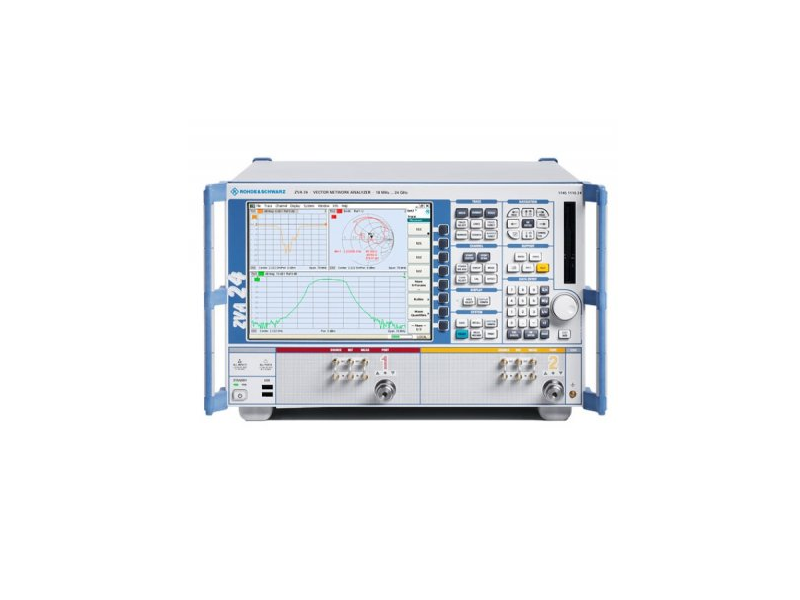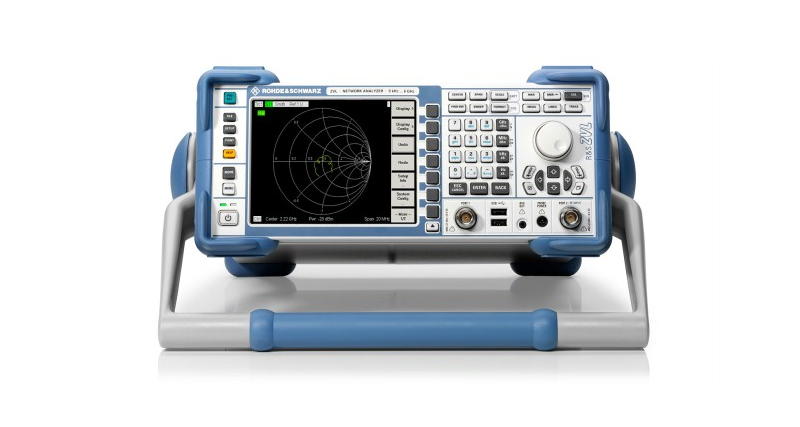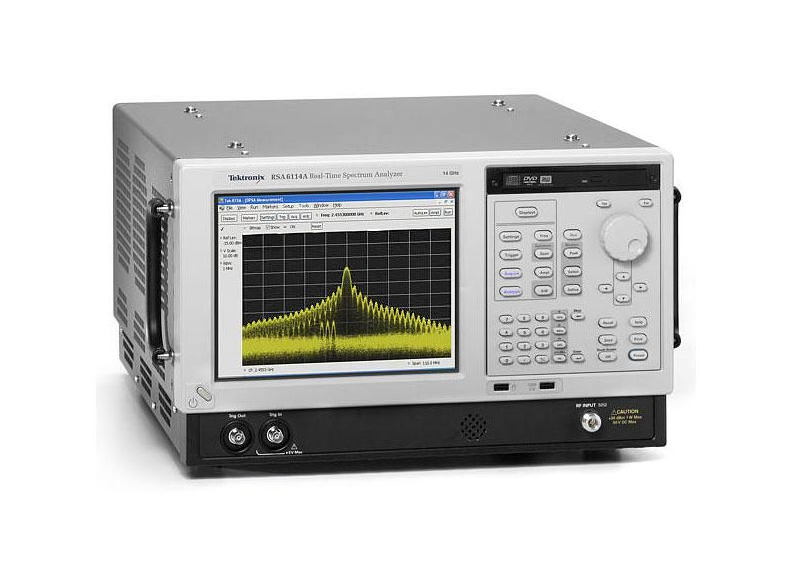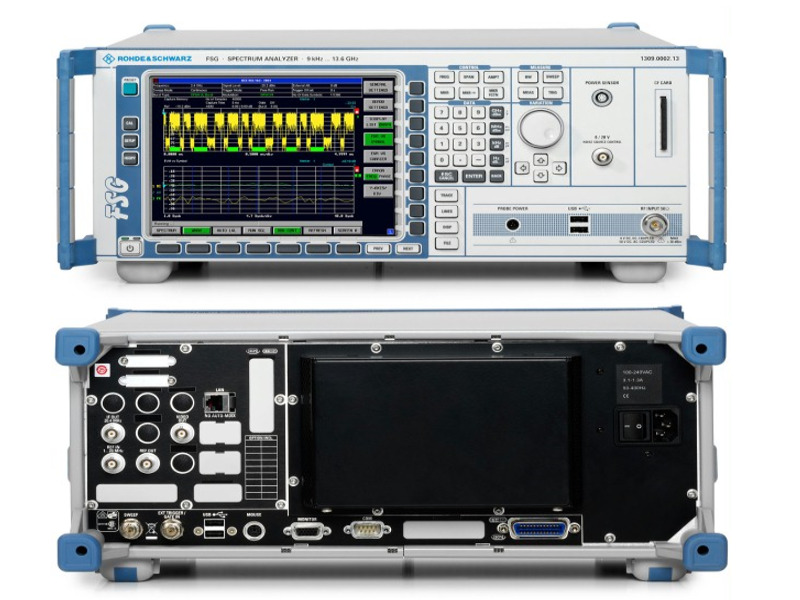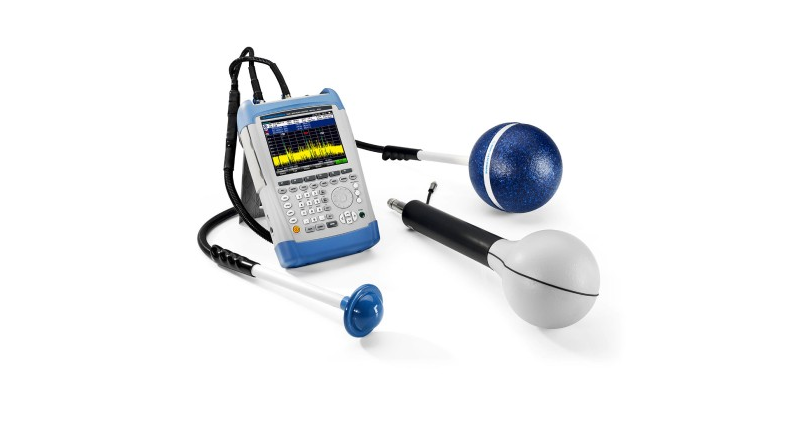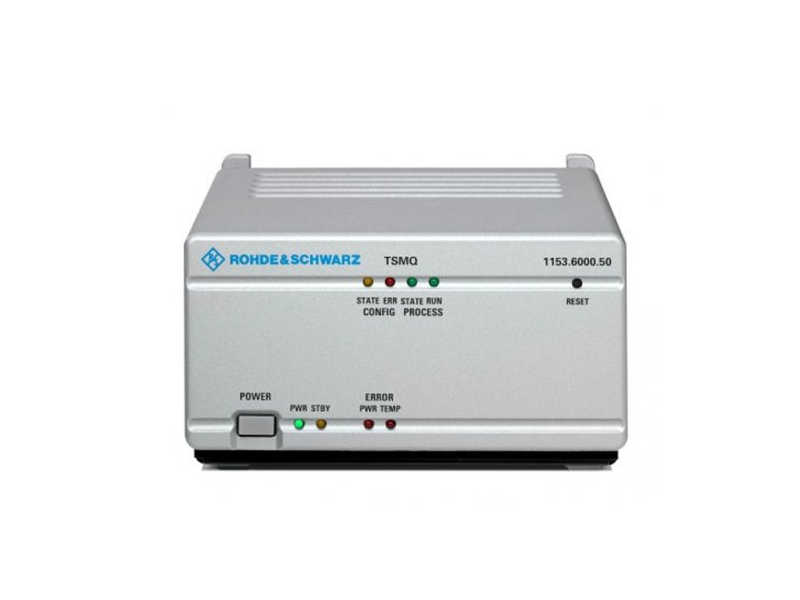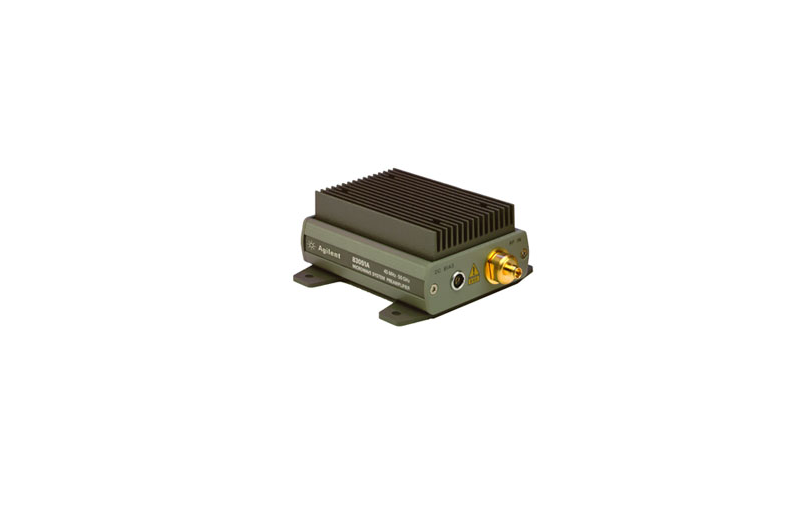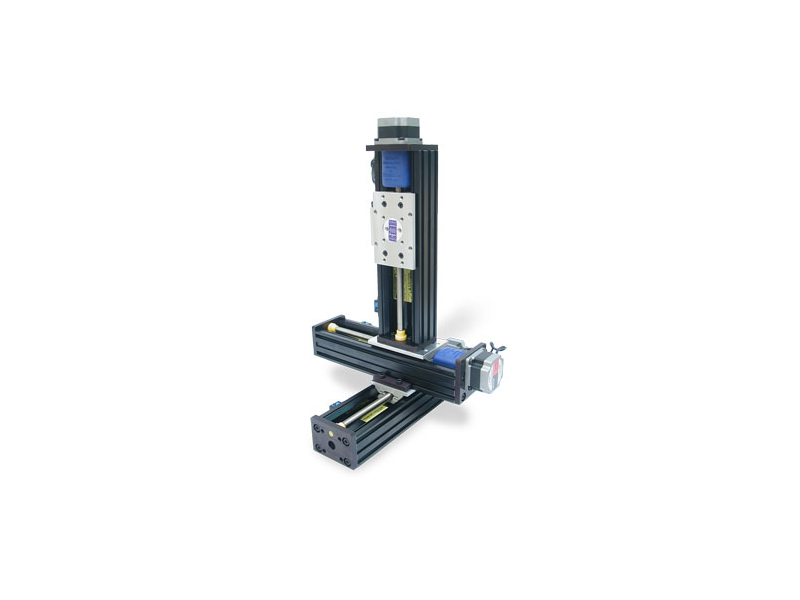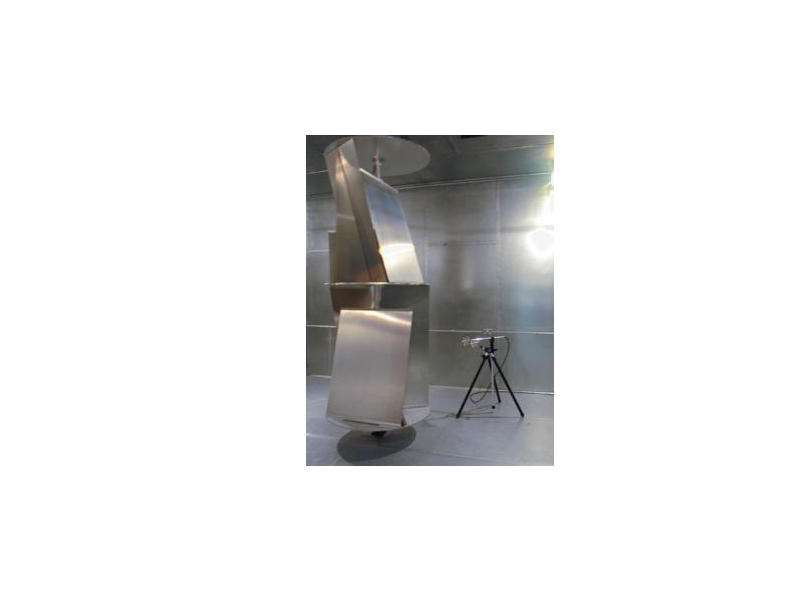École polytechnique de Bruxelles | Discipline : Électronique, photonique, télécommunication et commande
► Rohde&Schwarz ZVA24 Vector Network Analyzer
The R&S ZVA series is an ideal choice for demanding measurements in the lab and in production – from filter measurements requiring maximum dynamic range to linear and nonlinear measurements on amplifiers and mixers as well as on receivers and transceivers.
Key Features :
Frequency range from 10 MHz to 24 GHz
4 test ports | ×![]() |
► Rohde&Schwarz ZVL Vector Network Analyzer
The R&S ZVL is a cost-efficient, powerful, and portable network analyzer in the compact class, and is therefore ideal for use in development, production, and service. It is the only instrument to combine the functions of a network analyzer, spectrum analyzer, and power meter in a single box, and will thus tremendously increase your work efficiency.
Key Features :
Frequency range from 9 kHz to 6 GHz
2 test ports | ×![]() |
► Tektronix RSA6114A Spectrum Analyzer
The RSA6111A Spectrum Analyzer provides information for technicians to maintain or service a product. Information is given to the module level, and may include product care and cleaning tips, troubleshooting information, adjustments, and how to replace parts.
Key Features :
Frequency range from 9 kHz to 14 GHz
110 MHz acquisition bandwidth | ×![]() |
► Rohde&Schwarz FSG13 Spectrum Analyzer
The R&S FSG13 spectrum analyzer excels due to its high measurement speed and its performance, which is optimized for applications in mobile radio and wireless communications.
Key Features :
Frequency range from 9 kHz to 13.6 GHz
28 MHz maximal bandwidth | ×![]() |
► Rohde&Schwarz FSH8 Handheld Spectrum Analyzer
The R&S FSH8 handheld spectrum analyzer is a spectrum analyzer, network analyzer, cable and antenna analyzer, interference hunting analyzer and power meter. The feature-packed analyzer makes field measurements simple and efficient. The rugged design and built-in handle makes it ideal for any outdoor tasks.
Key Features :
Frequency range from 9 kHz to 20 MHz
20 MHz maximum bandwidth
| ×![]() |
► Rohde&Schwarz TSEMF-B1 Measurement System
In combination with R&S FSH8 handheld spectrum analyzers, the R&S TSEMF-B1 measurement system detects high-frequency electromagnetic fields in the environment (EMF).
Key-Feature:
Frequency range from 30 MHz to 3 GHz | ×![]() |
► Wideband field-strength meter Chauvin Arnoux 43 with EF2A Probe
Whether you are checking EletroMagnetic Compatibility, measuring exposure or seeking a source of radiation, the C.A 43 provides an effective solution for measuring eletromagnetic fields. The C.A 43 is can store 1,920 points in its memory and is equipped with a digital output on optical fibre for communication and display of the data with the Emigraph PC software (supplied as standard).
Features :
Wideband: 100 kHz to 2.5 GHz
Electrical field: 0.1 to 200 V/m
Power density: 0.1 to 2 mW/cm2
1 ms peak measurement
Configurable alarm threshold
EF2A isotropic probe as standard
Analogue output
Dimensions: 216 x 72 x 37 mm
Weight: 350 g | ×![]() |
► Rohde&Schwarz TSMQ Radio Network Analyzer
The R&S TSMQ Radio Network Analyzer provides unmatched capabilities for network analysis and optimization. The distinctive, compact-sized R&S TSMQ allows WCDMA PN scanning, GSM network scanning, and CDMA2000 1xEV-DO PN scanning simultaneously and with unsurpassed performance.
Measurement speed :
GSM 100 channels/s
WCDMA 50 measurements/s
CDMA2000 1xEV-DO 10 measurements/s
CW 625 measurements/s | ×![]() |
► Rohde&Schwarz SMATE200A Vector Signal Generator
Based on the successful R&S SMU200A platform, the R&S SMATE200A is specifically designed for production environments.
Key Feature :
Frequency range from 100 kHz to 3 GHz/6GHz | ×![]() |
► 2x Rohde&Schwarz ZVA-Z75 Millimeter Wave Converters
The R&S ZVA-Z75 Millimteter Wave Converters allow millimeter-wave measurements in the V, E, W, F, D, G, J and Y band as well as frequency range from 50GHz to 75 GHz.
Featuring a wide dynamic range, the converters offer high operating convenience and allow for fast measurements.
| ×![]() |
► HyperLOG 4025 Log periodic antenna including ISM434
The HyperLOG series 4000 LogPer-Antennas offer a wide frequency range down to 400MHz, in particular for covering the important 70cm amateur radio frequency range (430MHz and up). As a result, the physical size of these completely GOLD-COATED-antennas had to be increased significantly. The result is a antenna-series of unique high-tech antennas with a formerly totally unknown combination of functionality, performance and design in this price category.
Key Features :
Frequency range from 400MHz up to 2.5GHz
Directional
| ×![]() |
► JWF 50FH-XXX-30 Fixed Attenuator
50 Ohm coaxial fixed attenuator rated at 30 Watts maximum RF input power. Available dB values from 1dB to 50dB. The heatsink has mounting holes on both ends and on the bottom side.
Features :
Impedance: 50 Ohms
Frequency Start: 0 MHz (DC)
Frequency Stop: 2000 MHz
RF Input Power: 30 Watts
Attenuation Values: 1-50 dB
Heatsink Style: Square
RF Connectors: BNC, N, SMA, TNC, 4.1/9.5, 4.3/10, 7/16 | ×![]() |
► Keysight 83017A Microwave System Amplifier
The Keysight 83017A microwave system amplifier is a compact, off-the-shelf amplifier designed for systems designers and integrators. This amplifier provides power where you need it to recover system losses and to boost available power in RF and microwave ATE systems. The ultrabroad bandwidth from 500 MHz to 26.5 GHz allows the designer to replace several narrow bandwidth amplifiers with a single Keysight amplifier, eliminating the need for crossover networks or multiple bias supplies. | ×![]() |
► 2x Velmex three axis positioning system
Constructed with hard-coat anodized, aluminum dovetail ways and smooth motion PTFE bearings; Velmex BiSlides deliver higher rigidity for longer life and more precise movement. BiSlides have a load capacity of 136 kg horizontally and 45.4 kg vertically. Straight-line accuracy is 0.076 mm over entire travel distance. Repeatability is 0.005 mm.
• Small : +/- 40 cm displacements (for the three axes)
• Large : +/- 50 cm displacements (for the three axes) | ×![]() |
► Set for communication and localization prototyping
Universal software radio peripheral (USRP)
• 3x N210
• 6x X310 (12x UBX daughterboards)
• 3x B205mini-i
• 1x Octoclok (8-way distribution, 10 MHz, PPS)
Cables and connectors (adaptors)
• 6x SFP + cables (10 Gigabit Ethernet)
• 2x Intel X520-DA2 10 GbE Server Adapter SFP+
• Coaxial cables : 1, 2, 4, 6, 10 m
• RJ45 Ethernet cables | ×![]() |
► Electromagnetic reverberation chamber
• Dimensions : 3 x 4 x 2 m
• Stirrer
• RF Amplifier 08-4.2 GHz 15W | ×![]() |
► Electromagnetic field strength measurement from 30 MHz to 3 GHz
| |
► Drive test: geolocalized electromagnetic field strength measurement from 30 MHz to 3 GHz
| |
► Near field and far field electromagnetic analysis
| |
► Impact analysis of imperfect analog front-end on communication performance
| |
► Performance analysis of a digital communication channel
| |
► Crowd and attendance monitoring based on Wifi sensors
| |
► Crowd behaviour analysis and forecasting based on machine learning
| |
► Crowd counting and monitoring based on Wifi sensors
The work focuses on developing an intelligent crowd monitoring system for large public events based on Wifi signals emitted by attendees’ smartphone(s). The objectives are to provide crowd density as well as directional fluxes maps in real-time, and to forecast the evolution of crowd counts. The interests of such a system are crowd management and event safety; applications include
• Forecast hazardous situations (e.g., too many people at one place in 30 minutes)
• Help in dealing with hazards (by learning crowd dynamics and proposing mitigation actions)
• Detect unpredictable problems after they happen (e.g., terrorist attacks)
As mentioned, the system is based on the Wifi technology: each attendee’s smartphone with Wifi turned on sends out probe requests at regular time intervals in order to scan potential access points. The sending frequency depends on the manufacturers, generally between 30 seconds and 1 minute 30. Besides, each probe request includes a source MAC address which is a unique identifier provided by the device manufacturer and allows us then to uniquely distinguish a device among others.
The developed monitoring system comprises several sensors* that intercept probe requests and extract their source MAC addresses as well as additional non-personal data. The counting is performed assuming each source MAC address corresponds to one visitor. Since the system does not take into account people with Wifi device(s) turned off, an extrapolation factor must be used to pass from the number of attendees counted by the sensors to the effective number of visitors present in the event. Still, the reliability of this system should only increase with the growth of installed Wifi access points through the cities.
A website provides organizers with real-time information, like the number of attendees.
*Sensor hardware
1) Raspberry pi 3 model B in its plastic case
2) Wifi dongle with monitor mode
3) 3G/4G dongle | ×![]() |
► Low energy device positioning based on angle of arrival
The objective is to estimate the position of a narrowband signal transmitting antenna in real time based on the angle of arrival measurements of each anchor's signal, and the known position of each anchor. (triangulation method)
• Transmitter part: USRP b205 mini (connected to USB 3.0) generating a narrowband signal.
• Receiver part: USRP X310. Two receivers/anchors, each composed of 2 USRPs, on which 4 antennas rest. The antennas are placed in a uniform linear array, i. e. they are placed on a line at equal distance from each other. In addition, each USRP is equipped with 2 UBX daughterboards (1 Tx channel and 1 Rx channel per UBX daughterboard) and has 2 communication channels.
USRPs are connected to the computer via Ethernet.
The software used to control the USRPs is "GNU radio", containing libraries already implemented to convert the generated Python code to C++ (language required for USRP). | |
► Wideband-signal localisation based on the time reversal technology
The project focuses on estimating the position of a wideband-signal transmitting device (bandwidth >> 100 MHz) based on the time-reversal (TR) technology. The main goal is to design a TR precoder that creates a spot of power at the location of the communicating terminal and to adapt it over time by tracking the movements of the mobile terminal (MT).
Setup for single-input-single-output (SISO) and non-line-of-sight (NLOS) cases
• Transmitter: USRP X310 composed of 2 UBX 160 daughterboards
• Receiver: USRP X310 composed of 2 UBX 160 daughterboards
The UBX 160 provides a 160 MHz BW and a sampling rate up to 200 MS/s.
Both Tx and Rx are connected to a computer (a NIC Intel X520-DA2-2 installed) via 10 Gbit/s SPF optical cables.
The setup can be extendable to the single-input multiple-output (SMIO), multiple-input single-output (MISO) and multiple-input multiple-output (MIMO) cases. | |
► Wifi-based passive radar
The project goal is to design a passive radar based on emerging Wifi signals. The main interest of such a technology is to monitor crowd dynamics thanks to the better range and Doppler resolutions.
• Transmitter: USRP X310 with 2 UBX daughterboards.
• Receiver: USRP X310 with 2 UBX daughterboards.
Both Tx and Rx are connected via 10 Gbit/s ethernet connection. Devices are working at 5 GHz carrier frequency and at 80-160 MHz sampling rates.
To control the hardware, C/C++ codes are customised.
The setup will be extended to multiple antennas configurations in order to have a MU-MIMO system. | |
► High data rate body channel communication
The project aims to study the Human Body Channel as a way of enabling wearable devices communication without power radiation in the space surrounding the user. A video streaming demonstrator has been implemented in order to tests high-data rate communications and complex modulation schemes.
• Transmitter: USRP X310 with 1 UBX daughterboard
• Receiver: USRP X310 with 1 UBX daughterboard | |

